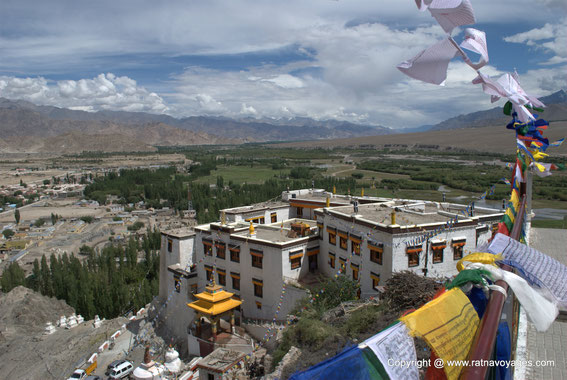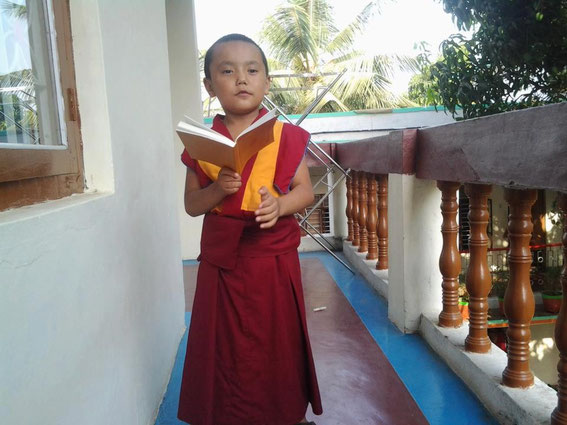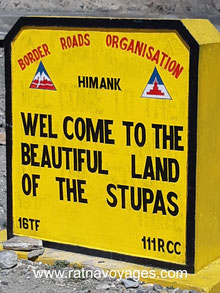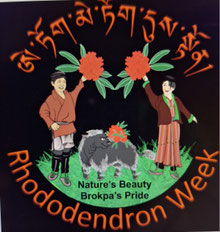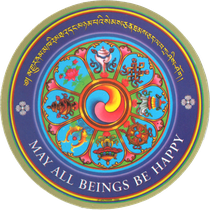SPITUK MONASTERY, INDUS VALLEY NEAR LEH - LADAKH

|
NAME/NOM/ NAME/NOME |
SPITUK GOMPA | |
|
LOCATION/LIEU/ ORT/LUOGO |
Spituk, 7Km from Leh | |
|
LINEAGE/TRADITION/ SCHULE/ORDINE |
Gelug-pa | |
|
FOUNDED/FONDÉ/ GEGRÜNDET/FONDATO |
11th Century | |
|
FOUNDER/FONDATEUR/ GRÜNDER/FONDATORE |
Od-de, the elder brother of Lha Lama Changchup Od | |
|
|
||
|
PROTECTOR/PROTECTEUR/ SCHIRMHERR/PROTETTORE |
Palden Lhamo | |
|
SPIRITUAL HEAD/ MAÎTRE SPIRITUEL/ GEISTIGES OBERHAUPT/ CAPO SPIRITUALE |
H.H. 20th Kushok Bakula Rimpoche | |
|
BRANCH/AFFILIÉ/ ZWEIG/AFFILIATO |
||
| FESTIVAL | Gustor | |
| FESTIVAL 2024 | January 09-10, 2024 |
Spituk Monastery - Historical Background
Spituk Monastery, also known as Spituk Gompa, is situated near Leh, the capital of Ladakh, India. It was founded in the 11th century by Od-de, the elder brother of Lha Lama Changchub Od, under the Gelugpa sect.
Spituk Monastery - Origins of the Name
The name "Spituk" translates to "exemplary" in the local language, and the monastery is considered exemplary in terms of its architecture, teachings, and cultural significance.
Spituk Monastery - Architectural Features
Spituk Monastery is perched atop a hillock, offering stunning views of the Indus Valley.
The monastery's architecture reflects a blend of Tibetan and Indian styles with its white structure and intricate woodwork.
Spituk Monastery - Religious Significance
Spituk is known for its rich religious traditions, and it houses a notable collection of Buddhist scriptures, artifacts, and thangkas (religious
paintings).
The monastery is a center for Buddhist teachings, and the monastic community actively engages in prayer sessions and religious ceremonies.
Spituk Monastery - Gustor Festival
One of the most significant events at Spituk Monastery is the annual Gustor Festival, celebrated with enthusiasm.
The festival involves sacred masked dances (Chams), depicting various deities and stories from Buddhist mythology.
Pilgrims and tourists gather to witness these colorful and spiritually significant performances.
Spituk Monastery - Assembly Hall (Dukhang)
The Dukhang within the monastery serves as the main assembly hall where monks gather for prayers and rituals.
It is adorned with vibrant murals, statues, and thangkas, creating a spiritually charged atmosphere.
Spituk Monastery - Chapel of Vajrabhairava
Spituk Monastery is renowned for the Chapel of Vajrabhairava, which houses a fearsome yet revered deity.
The deity's image is unveiled to the public during the Gustor Festival, attracting devotees seeking blessings.
Spituk Monastery - Guardian Deities
The monastery is dedicated to the teachings of Tsongkhapa, the founder of the Gelugpa sect, and houses statues of various guardian deities.
Spituk Monastery - Community Engagement
The local community actively participates in the maintenance and preservation of Spituk Monastery, contributing to its cultural and historical continuity.
Spituk Monastery - Tourist Attraction
Spituk Monastery draws tourists and spiritual seekers alike, offering an insight into Ladakh's Buddhist heritage and providing a serene environment for contemplation.
Spituk Monastery - Conservation Efforts
Conservation initiatives are undertaken to preserve the ancient art and structures of Spituk Monastery, ensuring its continued significance for future generations.
Spituk Monastery stands as a symbol of Ladakh's spiritual richness, providing a glimpse into the region's cultural and religious tapestry.
Tashi Phunchok with His Holiness 20th Kushok Bakula Rinpoche, Thubstan Nawang, born on 24 November 2005 in Kyagar Village, Nubra Valley. He was enthroned in Spituk Gompa on 6 August 2010.
Ven. Kushok Bakula Rinpoche is an emanation of the Buddha Amitabha and was one of the 16 Arhats (disciples) of Buddha.
His Holiness 20th Kushok Bakula Rinpoche is now living in South India at Spituk Khantsen Monastery, Karnataka, for his studies.

